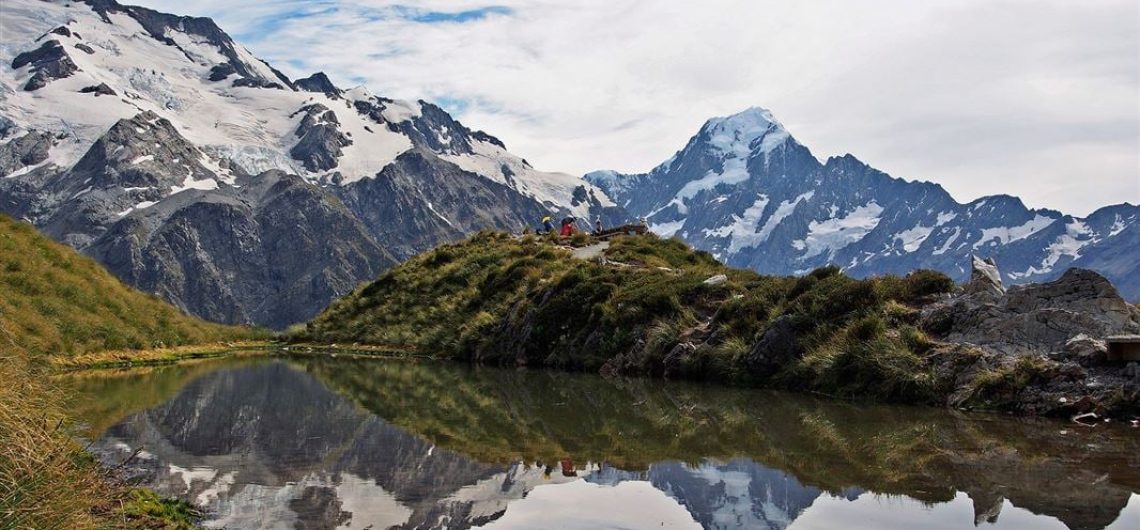New Zealand is a country renowned for its stunning landscapes, and among its natural wonders are the highest mountains that grace its beautiful terrain. These majestic peaks offer breathtaking views, adventurous opportunities, and a true sense of awe. Here are some of the highest mountains in New Zealand:
The island nation of New Zealand, often known as “Aotearoa,” has a staggeringly varied environment covering around 103,750 square kilometres. It is roughly 23 million years old and is made up of 700 or so islands of various sizes that were thrust up from the water by volcanic activity. Currently, New Zealand is home to over 50 volcanoes in addition to sand beaches, undulating hills, fiords, plains, and, of course, mountains.
The South Island, one of New Zealand’s two main islands, is home to the majority of its peaks, making up around a third of the country’s hilly terrain. A sizable volcanic plateau can be seen in the North Island’s centre. What are New Zealand’s tallest mountains, then? 18 mountains are taller than 9,800 feet in the Southern Alps Range, which spans around 310 miles in the South Island. This includes the tallest peak in New Zealand.
In addition, they are dispersed throughout both the North and South Islands, with the Southern Alps, which are the most prominent mountain range in the country, covering sixty per cent of the South Island. The Southern Alps are a spectacular mountain range that may be found on the western side of the South Island and extends for a distance of 310 miles (500 kilometres). The range was formed as a result of the collision of two tectonic plates, namely the Pacific and the Australian, which the country is situated on. The Pacific Ring of Fire is an area that is well-known for its high levels of tectonic activity, and the Southern Alps are a component of that zone. Towering peaks, glaciers, and alpine lakes are some of the features that contribute to the breathtaking and attractive panorama that it provides. The Southern Alps are home to several New Zealand’s tallest summits, including the world-famous Mount Cook, which is located along the range. Mountaineers, hikers, and people who are passionate about nature come from all over the world to visit this mountain range because it provides a diverse selection of opportunities for outdoor activities and spectacular views.
1. Aoraki / Mount Cook
Canterbury – 3,754 meters | 12,316 feet
Located in the Canterbury region, Aoraki / Mount Cook is the highest mountain in New Zealand, reaching an impressive elevation of 3,754 meters (12,316 feet). It is a prominent peak within the Southern Alps, offering stunning alpine scenery and thrilling mountaineering opportunities. Aoraki / Mount Cook is not only a captivating natural landmark but also holds cultural significance for the indigenous Māori people, who consider it a sacred site.
2. Mount Tasman
West Coast – 3,498 meters | 11,473 feet
Situated in the West Coast region of New Zealand, Mount Tasman stands at an elevation of 3,498 meters (11,473 feet). It is the second-highest peak in the country and is known for its majestic presence and glaciated terrain. Mount Tasman offers a challenging ascent for experienced mountaineers and rewards them with breathtaking views of the surrounding alpine landscape.
3. Mount Dampier
Canterbury – 3,440 meters | 11,286 feet
Mount Dampier is located in the Canterbury region of New Zealand and reaches a height of 3,440 meters (11,286 feet). It is part of the Southern Alps and provides a remarkable mountaineering experience for those seeking adventure and breathtaking vistas. The rugged beauty and remote wilderness surrounding Mount Dampier make it a sought-after destination for climbers and nature enthusiasts alike.
4. Mount Vancouver
West Coast – 3,309 meters | 10,856 feet
Found in the West Coast region, Mount Vancouver reaches an elevation of 3,309 meters (10,856 feet). It is an impressive peak with a commanding presence in the Southern Alps. Mount Vancouver offers a challenging climb and rewards mountaineers with awe-inspiring panoramic views of the surrounding mountains and glaciers.
5. Silberhorn
West Coast – 3,303 meters | 10,837 feet
Situated in the West Coast region, Silberhorn stands at an elevation of 3,303 meters (10,837 feet). It is a stunning peak known for its icy beauty and alpine grandeur. As a part of the Southern Alps, Silberhorn offers an exhilarating climbing experience for those seeking to test their mountaineering skills in a pristine and awe-inspiring environment.
6. Mount Hicks (Saint Davids Dome)
West Coast – 3,216 meters | 10,551 feet
Located in the West Coast region, Mount Hicks, also known as Saint Davids Dome, reaches a height of 3,216 meters (10,551 feet). It is a majestic mountain with a distinctive dome-like shape, showcasing the geological wonders of New Zealand’s Southern Alps. Mount Hicks presents a challenging but rewarding climb for experienced mountaineers who are drawn to its beauty and remote wilderness.
7. Malte Brun
Canterbury – 3,198 meters | 10,492 feet
Situated in the Canterbury region, Malte Brun stands tall at an elevation of 3,198 meters (10,492 feet). It is a notable peak within the Southern Alps, offering a remarkable mountaineering experience. With its rugged slopes and glaciated terrain, Malte Brun provides a challenging ascent for adventurous climbers seeking to conquer its majestic heights.
8. Mount Lendenfeld
West Coast – 3,194 meters | 10,479 feet
Located in the West Coast region, Mount Lendenfeld reaches an elevation of 3,194 meters (10,479 feet). It is a prominent peak in the Southern Alps, known for its striking appearance and alpine beauty. Mount Lendenfeld presents an exciting challenge for mountaineers, inviting them to explore its pristine slopes and experience the thrill of conquering its summit.
9. Mount Sefton
West Coast – 3,151 meters | 10,338 feet
Situated in the West Coast region, Mount Sefton stands proudly at an elevation of 3,151 meters (10,338 feet). It is a captivating peak known for its dramatic presence and glaciated terrain. Mount Sefton offers a rewarding mountaineering experience, allowing climbers to immerse themselves in the rugged beauty of New Zealand’s Southern Alps.
10. La Perouse
Canterbury – 3,078 meters | 10,098 feet
Located in the Canterbury region, La Perouse reaches an elevation of 3,078 meters (10,098 feet). It is a picturesque mountain within the Southern Alps, offering breathtaking vistas and a challenging climb for mountaineers. The rugged landscapes surrounding La Perouse create a serene and awe-inspiring setting for those who venture to its summit.
How many people from New Zealand climb Kilimanjaro each year?
It is estimated that approximately 228 people from New Zealand climb Mount Kilimanjaro each year. These adventurous individuals from New Zealand embark on a remarkable journey to conquer the iconic peak and immerse themselves in the breathtaking landscapes of Tanzania. Mount Kilimanjaro’s allure captivates climbers from around the world, including those from New Zealand, who seek the exhilaration of reaching its summit and witnessing the stunning vistas from Africa’s highest point. The New Zealand climbers join the global community of mountaineers in their pursuit of this awe-inspiring challenge, forging unforgettable memories and pushing their personal boundaries along the way.
How much does it cost to climb Kilimanjaro in New Zealand Dollars?
To provide an estimate of the cost to climb Kilimanjaro in New Zealand Dollar (NZD), please note that exchange rates may fluctuate. Here is an approximation based on the given prices:
- Marangu route – 6 days starting from USD 1,695 = approximately NZD 2,435
- Machame route – 7 days from USD 1,985 = approximately NZD 2,851
- Crater Camp route – 9 days from USD 2,895 = approximately NZD 4,161
- Rongai route – 7 days from USD 1,885 = approximately NZD 2,708
- Lemosho route – 8 days from USD 2,350 = approximately NZD 3,376
- Northern Circuit route – 9 days from USD 2,545 = approximately NZD 3,657
Please note that these figures are rough estimates and the actual costs may vary due to exchange rate fluctuations, tour operator fees, additional services, and personal expenses. It is recommended to consult with reputable tour operators or travel agencies for the most accurate and up-to-date pricing information in New Zealand Dollars.
Get to know the 20 best hikes in South Island New Zealand
Check out 10 best hikes in New Zealand
![]()


Comments